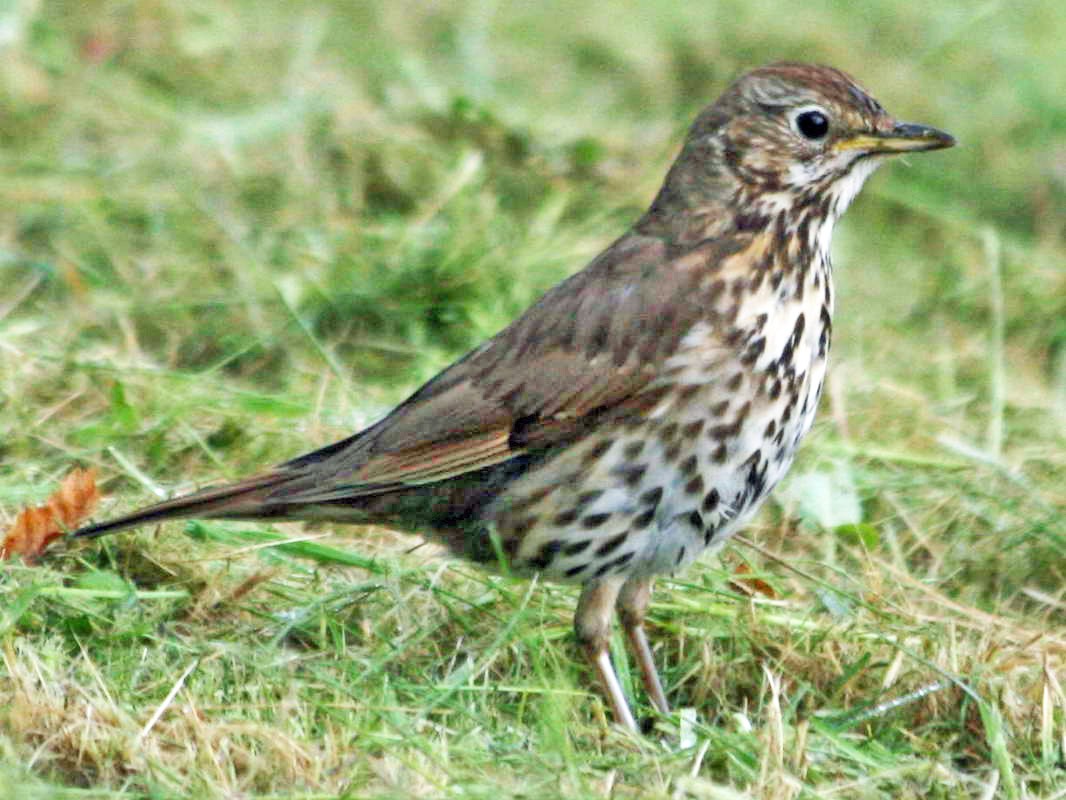Song Thrush
A species of True thrushes Scientific name : Turdus philomelos Genus : True thrushes
Song Thrush, A species of True thrushes
Botanical name: Turdus philomelos
Genus: True thrushes
Content
Description People often ask General Info
 Photo By DickDaniels , used under CC-BY-SA-3.0 /Cropped and compressed from original
Photo By DickDaniels , used under CC-BY-SA-3.0 /Cropped and compressed from original Description
The song Thrush is a medium-sized bird known for its beautiful, melodic song. It has speckled brown plumage and a distinctive black spot on its breast. The bird feeds on a variety of insects, snails, and fruit, and is commonly found in wooded areas and gardens. 
Size
23 cm
Life Expectancy
14 years
Nest Placement
Shrub
Feeding Habits
Song Thrush is omnivorous, consuming earthworms, snails, fruit, and berries. Song Thrush uses an 'anvil' stone to break snail shells, a unique adaptation. Song Thrush's diet varies with availability, relying on snails during scarce conditions.
Habitat
Song Thrush's habitat encompasses temperate forests, woodlands in lowlands, and mountainside areas up to tree-lines. The environment favors mixed vegetation with abundant invertebrates, crucial for sustenance. Adaptable, song Thrush thrive in both coniferous and deciduous forests, as well as modified landscapes like agricultural fields, urban settings, and gardens which are vital for breeding. Non-breeding season sees a shift to drier regions, preferring open wooded lands and parks.
Dite type
Omnivorous
People often ask
General Info
Feeding Habits
Bird food type
Bird Feeder Type

Ground

Platform
Sounds
Song
Recording location: Belgium
Song
Recording location: Belgium
Call
Recording location: Netherlands
Behavior
The song thrush is not usually gregarious, although several birds may roost together in winter or be loosely associated in suitable feeding habitats, perhaps with other thrushes such as the blackbird, fieldfare, redwing and dark-throated thrush. This is a monogamous territorial species, and in areas where it is fully migratory, the male re-establishes its breeding territory and starts singing as soon as he returns. 
Distribution Area
The song thrush breeds in most of Europe (although not in the greater part of Iberia, lowland Italy or southern Greece), and across the Ukraine and Russia almost to Lake Baikal. In New Zealand, where it was introduced on both the main islands, the song thrush quickly established itself and spread to surrounding islands such as the Kermadecs, Chatham and Auckland Islands. Although it is common and widespread in New Zealand, in Australia only a small population survives around Melbourne. 
Species Status
The song thrush has an extensive range, estimated at 10 million square kilometres (3.8 million square miles), and a large population, with an estimated 40 to 71 million individuals in Europe alone. The IUCN Red List categorises this species as of "Least Concern". In Great Britain and the Netherlands, there has been a more than 50% decline in population, and the song thrush is included in regional Red Lists. 
Scientific Classification
Phylum
Chordates Class
Birds Order
Perching birds Family
Thrushes Genus
True thrushes Species
Song Thrush